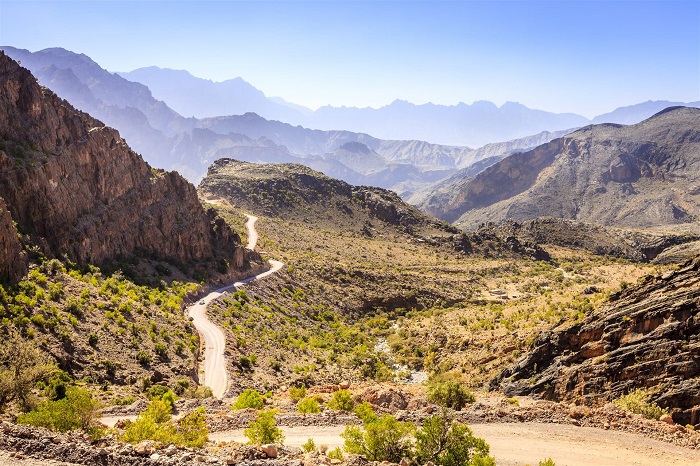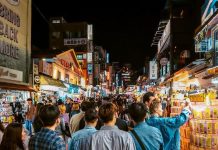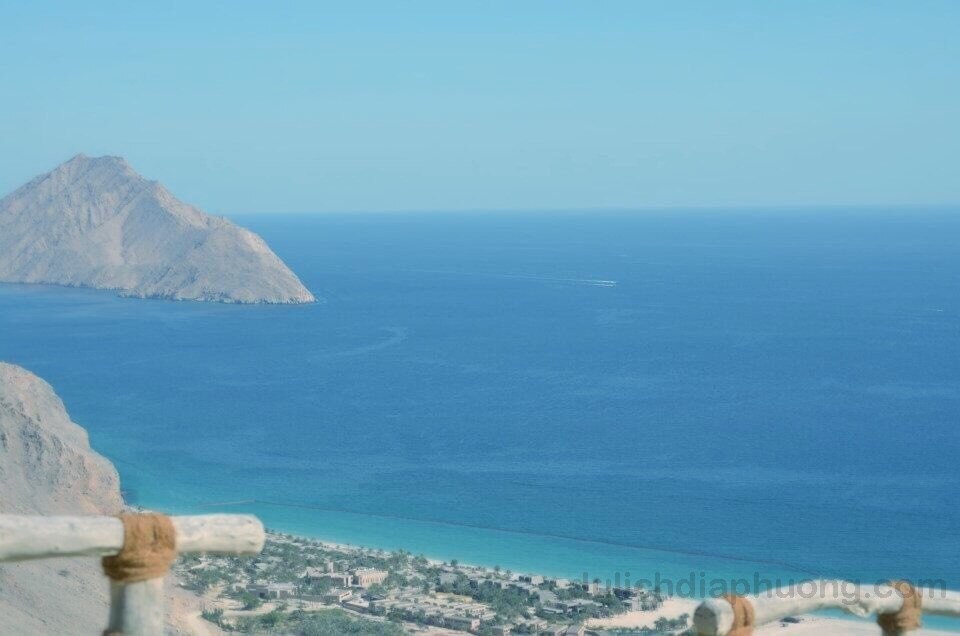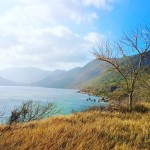Although it is a small country in the Middle East, but Oman converges all the beautiful landscapes such as: Stunning sea, blue sky, mountains, deserts, cities and owns a unique cuisine like nowhere else. If you are planning to travel with your family or friends to this beautiful country, you should not miss the Oman travel guide below.
- The ultimate guide to Hongdae. Seoul’s HOT Shopping, Dining & Entertainment Neighborhood
- Hongdae travel blog — How to visit, what to do in Hongdae & what to eat in Hongdae?
- 15+ most famous & best temples in Korea
- Best bubble tea in Taiwan — Top 11 most famous & top bubble tea brands in Taiwan
- 19+ top places to visit & best things to do in Kota Kinabalu for First Time Visitors
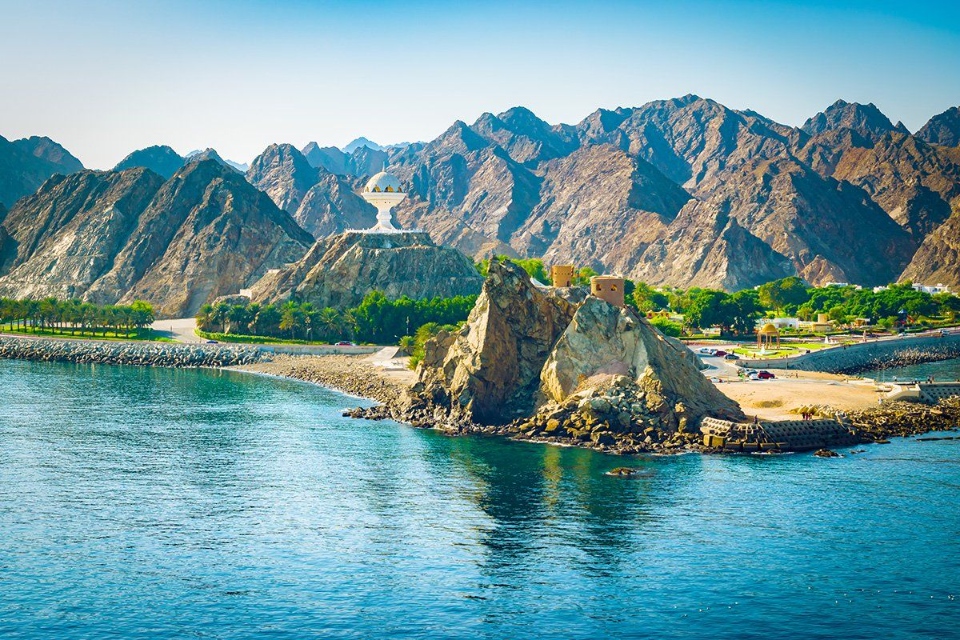


So, is Oman worth visiting, how to visit Oman, what to do in Oman and how to plan a budget trip to Oman for the first-time perfectly? Let’s check out our Oman travel blog (Oman blog) on my trip to Oman with the fullest Oman travel guide (Oman tourist guide, Oman guide) from how to get to Oman, best places to visit, best time to come, what to eat as well as top things to do in Oman to help you maximize your trip as follows!


Oman is located in the southeast of the Arabian peninsula, sharing borders with Saudi Arabia, the UAE and Yemen. The country possesses a diverse natural landscape with mountains, waterfalls, deserts, oases and seas. Although not a famous country on the tourist map, Oman still has many interesting things for visitors to explore.

Overview of Oman (# oman travel blog)

Oman, also known as the officially the Sultanate of Oman, is located in the Southeast Arabian peninsula, the Northwest borders with the United Arab Emirates, the West borders with Saudi Arabia, the Southwest borders with Yemen and the South borders with the Indian Ocean.

Oman is often referred to as the hidden jewel of the Middle East. Although it is the oldest independent Arab country in the world, Oman is still an unpopular country in terms of tourism. When you think about traveling to Oman, you probably picture deserts, traditional bazaars, and Bedouins riding camels in the sunset.

Oman is a country with a very proud history. Oman was also one of the first Muslim countries to establish relations with Western countries and continues to maintain that relationship to this day. Having a fairly open mind, Oman also carries with it countless evidences of an ancient civilization, with more than 500 fortresses, towers and even castles.


The main language of Oman is Arabic, there are also local languages such as: Kumzari, Bathari, Harsusi, Hobyot, Jibbali, Mehri. Among them, English English is also widely used.
Some interesting facts about Oman (# oman travel blog)
Safe for visitors
Oman is trying to get out of the “golden circle” of the economy and start actively developing tourism as an alternative solution. So visitors are welcome everywhere. Locals won’t be rude or upset when you’re wearing shorts and a t-shirt, but you should adhere to an Islamic country’s codes of conduct and respect the traditions and beliefs of the Omani people.

According to the data of the World Economic Forum (WEF) in 2019, Oman is the 5th safest country in the world. Visitors here do not have to worry and take excessive precautions about theft when traveling because the locals, thanks to their wealth of oil, have a stable economy. Of course, this doesn’t mean you can’t lock your car or sleep with the door open in a hotel.
Produce the world’s most expensive perfume
The Omani capital of Muscat is known for producing one of the most expensive perfumes in the world called Amouage, with prices as low as hundreds of dollars. This perfume includes ingredients that can only be purchased in the territory of Oman.

Amouage was founded in 1983 when Sultan Qaboos bin Said ordered Prince Sayyid to set up a company to preserve Oman’s perfumery traditions. At the same time, the King also wanted a priceless and branded gift to give to world leaders when they visit the country. That’s why some bottles have the Omani dagger (Khanjar) symbol, the national emblem of Oman and others have the dome emblem of the Sultan Qaboos Grand Mosque. It’s also a valuable gift you can buy before leaving the country.
Arid but unique nature

Nature is a true treasure of Oman that invites visitors to explore. Coming here, you can relax on the clear beaches, eco-tours, diving and fishing with spears. In addition, you can experience desert activities such as horse or camel racing. Many tourists liken Oman to the moon, with many rocky mountains, not a single blade of grass growing. In fact, the nature of Oman is very rich with many attractions such as the caves of the Wadi Darbat valley, the “lost city” of Ubar, the Kahf al-Marnif cave… On the Musanda peninsula, separated from Oman and the UAE, visitors can see the fjords.

Used to own the world’s largest rug
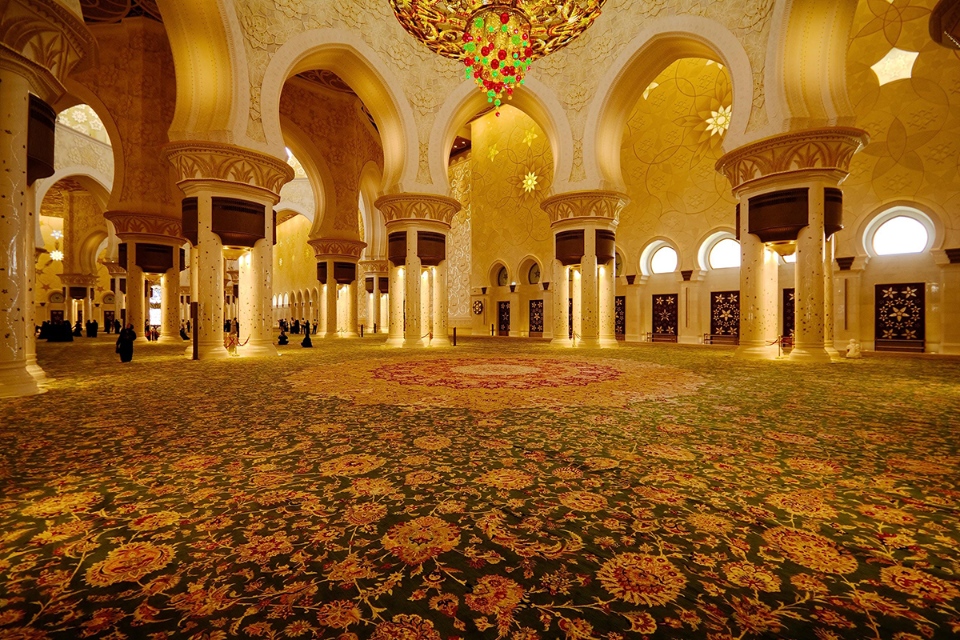
When visiting the Sultan Qaboos Grand Mosque in Muscat, you will admire the Persian rug that once held the Guinness World Record for the largest carpet in the world, before being usurped by the carpet at the Sheikh Zayed Grand Mosque in Abu Dhabi (UAE). Oman is also famous for its old, Arabic-style bazaars, where you can buy local crafts and enjoy the local flavors. Bazaars in the Middle East are often crowded and noisy, but in the capital of Oman, they are completely different. Everything here is luxurious and the local aristocrats often come here for a walk.
Strong currency
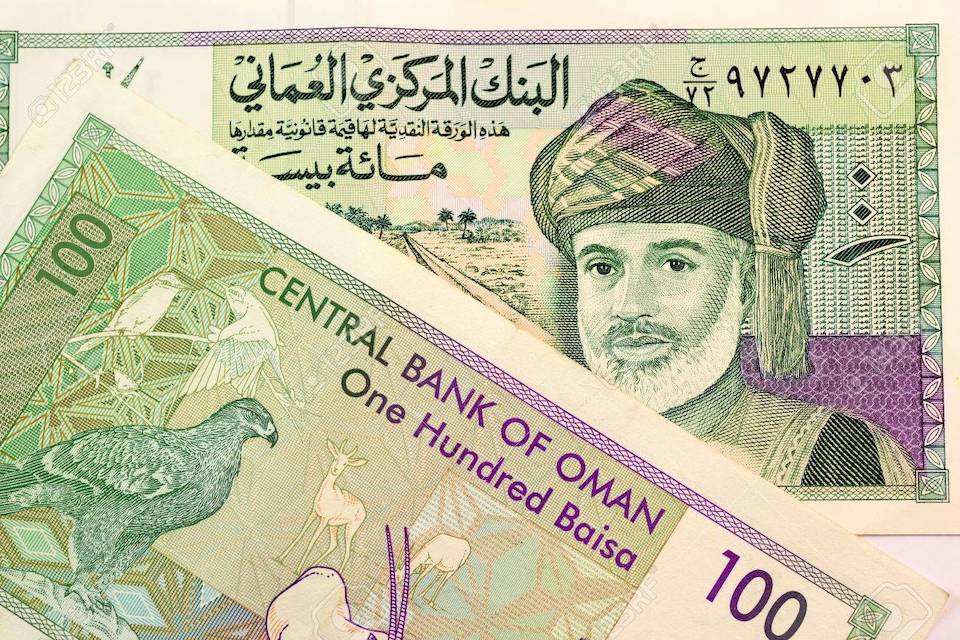
The Omani rial is considered one of the most valuable currencies in the world, equivalent to 2.60 USD or 2.33 euros. The currency’s purchasing power is so strong that the government had to issue notes in denominations of 1/2 and 1/4 rials, and “kopecks” (units smaller than rials). Because of this, visitors always need to be careful when exchanging money and making purchases.
No toilet paper

In Oman, people use a spray and every toilet has a nozzle so sometimes you can’t find toilet paper. Therefore, visitors to this country should note to bring toilet paper.
Omani locals live mainly in multi-storey villas. Here, people often build houses so that each room has its own toilet, like the personal space of the person living in each room. In a typical Omani villa, you can find 6 rooms with 6 bathrooms.
Hot weather
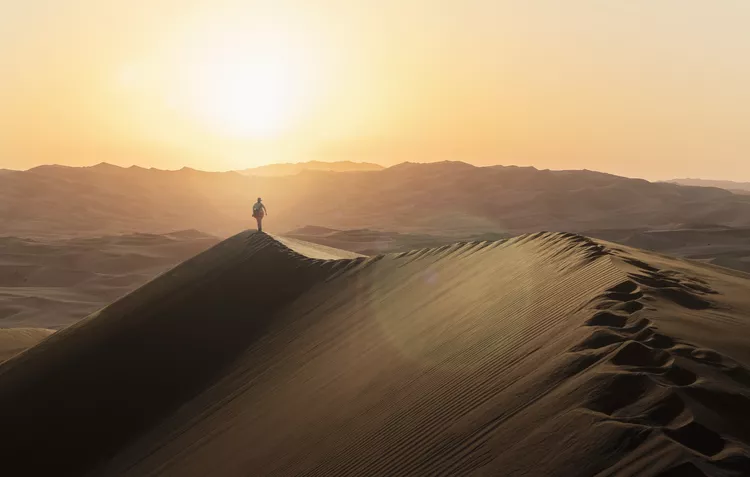
From April to October is the hottest period in Oman, when many locals sometimes succumb to the heat and migrate to the tropics in the south of the country. Oman is considered a place for campers. Here, instead of booking a hotel, you can rent a car, bring a tent and the necessary items to go camping across the country.
People love to eat rice
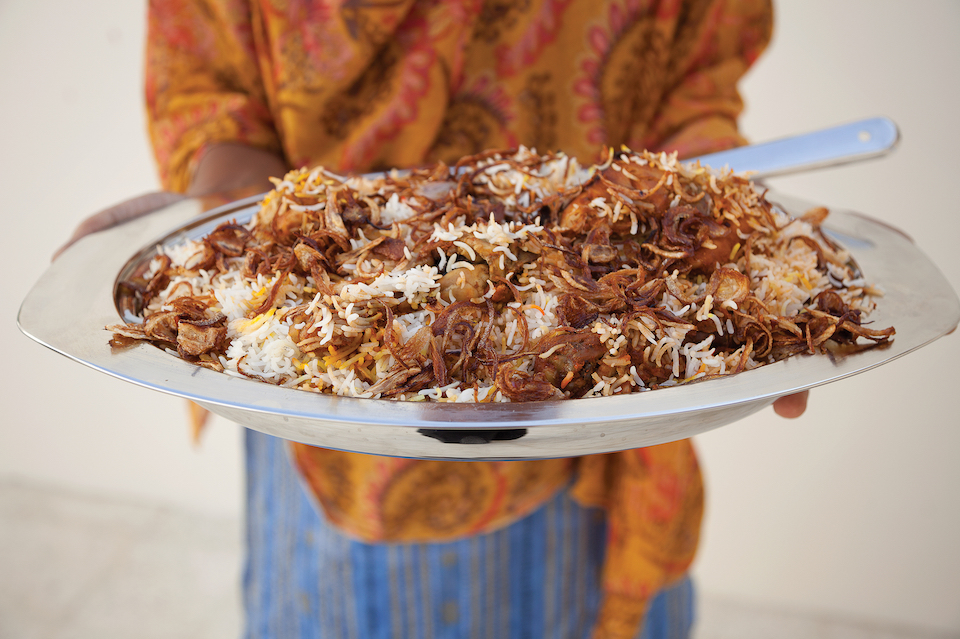
Omani people eat a lot of rice and rice is the main ingredient of many dishes. Although Middle Eastern dishes are often very spicy, there are no spicy dishes on the Omani menu. Referring to Omani cuisine, we must mention “halwa” (Sweet Jelly Dessert). “Halwa” is a specialty of this country, eaten both on holidays and on weekdays. This is a jelly dish made with saffron, cardamom, buffalo butter, nuts and rose water. In each region of Oman, halwa can be varied in different ways.
When should you go to Oman? (# oman blog)

Oman has a hot climate all year round, with very little rain. The highest temperature can fluctuate at approximately 50 degrees Celsius. The period from September to mid-May next year is the most chosen by tourists.

The time from the end of May and August is the hottest and wet season, so the regions bordering the sea and deeper inland, the drier the climate.
Getting to Oman (# oman travel guide)
Currently, there is no direct flight from Vietnam, you can book tickets of airlines such as: Qatar Airways, Malaysia Airlines, Thai Airways, Emirates, Turkish Airlines. Then connect flight at Suvarnabhumi Airport (Bang Kok, Thailand), Doha (Qatar), Hong Kong International Airport. The flight time is from 11 hours 55 minutes to 25 hours 40 minutes.

You can go to Google Flights, Skyscanner, or Kayak to find cheap air tickets to Muscat International Airport which is about 32 km from the city center as well as most suitable flight routes.
Geting around Oman (# oman guide)

There are a few means of transport you should pay attention to when traveling to Oman as follows:
Taxi: Is a less common means of transport and usually will not be charged according to the meter, so when you use it, you must bargain in advance before getting on.
Bus: A popular means of transport here, and the price is also clearly listed by route with a very reasonable price.
Bicycle: Is a specialized vehicle for climbing off-road, if you are a fan of this type of sport, try the experience.
Car rental: This type of vehicle is for personal needs, you can rent it separately to go off-road or to transport in the desert, to rent this vehicle you must have an international driver’s license, the rental price is not cheap.
Where to go, what to do in Oman?

Oman tourist attractions are diverse, you can visit fortresses and deserts, mountains and beaches, mosques and markets, and swim in the beautiful waters.
Oman is famous not only for its cultural charm but also for its history and architectural gems. While a short visit won’t be suitable for tourism, if you only have a few days to a week, focus on these must-see attractions.
Muscat
Most trips to Oman start in the capital city of Muscat
Nestled beneath craggy mountains, Muscat is one of Oman’s oldest and most beautiful cities. Serving as an essential trade link between east and west, this capital city is one of the most popular places to visit in Oman.

The city, located between the Arabian Sea and towering limestone cliffs, is ever-expanding along the coast.
With unspoiled beaches at one end and ornate historic sites, Muscat is an absolute must-visit for those looking to discover the culture of Oman. Although now a fully developed city, Muscat’s history has left an indelible mark on its culture, and is now reflected in its series of historic religious works.

This tourist attraction in Oman has a beautiful historical district. East African-style wooden balconies and several seaside fortresses make Muscat a picturesque relaxation destination. It is worth spending a few days there and visiting the markets, museums, fortresses, mosques and areas by the sea.
Sultan Qaboos Grand Mosque

Perhaps the most beautiful building in Muscat is the main mosque of Oman. Built in 2001, it is one of the rare mosques in the country that is open to non-Muslims. That’s why it’s a great place to learn about Islam and Islamic architecture. When it opened, it had the world’s largest prayer rug weighing 21 tons and took four years to made by hand.

It Built over 6 years, starting in 1995, this mosque can accommodate 20000 worshipers. With over 600,000 Swarovski STRASS crystals (it’s the finest crystal on the planet), over a thousand halogen bulbs, and 24-karat gold plating, this chandelier took 4 years to complete.

The Sultan Qaboos Grand Mosque is Muscat’s most prominent architectural work when you look at the eight-ton Swarovski chandelier and the vast Iranian rug, which 400 weavers took four years to make.

Mutrah Souq

Mutrah Souk is one of the oldest bazaars in the Arab world. For centuries, this market served as a place to trade goods through the port of Muscat from India, China, Europe and other parts of the Middle East. Today, the Souk remains a lively market, selling local products such as fruits, vegetables, herbs and spices as well as traditional textiles, garments, jewelry, incense, pipes, pottery and handicrafts.

Mutrah Souq – with its busy harbour, glittering buildings and a buzzing bazaar. Immerse yourself in the enchanting Mutrah Souq’s maze of dusty antique shops, spice stalls and gold dealers.
Al Alam Palace
With golden pillars, turquoise ornaments, and gardens of pink bougainvillea in bloom, Al Alam Palace is an Oman tourist attraction – an outstanding example of contemporary Islamic architecture.

Al Alam Palace was built on the site of a former British Embassy in Muscat. The yellow and blue facade makes this place very different from the rest of the buildings in the capital of Oman. Although not open to visitors, you can walk around and admire the palace and gardens from the outside.

Al Alam Palace is the ceremonial palace of His Majesty located in the heart of Old Muscat. The palace has a history of more than 200 years, built by Imam Sultan bin Ahmed. The palace, which now has a gold and blue façade, was rebuilt as a royal residence in 1972.
Royal Opera House Muscat

With a combination of stunning architecture and an incredible roster of performers, the Royal Opera House is one of the must-sees when traveling to Muscat. Walking tours around the Opera House are held daily.

Muscat Fish Market
Fishing is one of the most important industries in Oman. That’s why the Fish Market in Muscat is a place where you can see different types of fish and get a taste of local daily life.

However, it is not only the fish market that is interesting. The part of the market with local fruits and vegetables is well worth a visit. Oman is very famous for its delicious dates. Their taste is very special than other places you have tried. So if you’re looking for something to take home then buy some dates at the market in Muscat.
Mutrah Fort
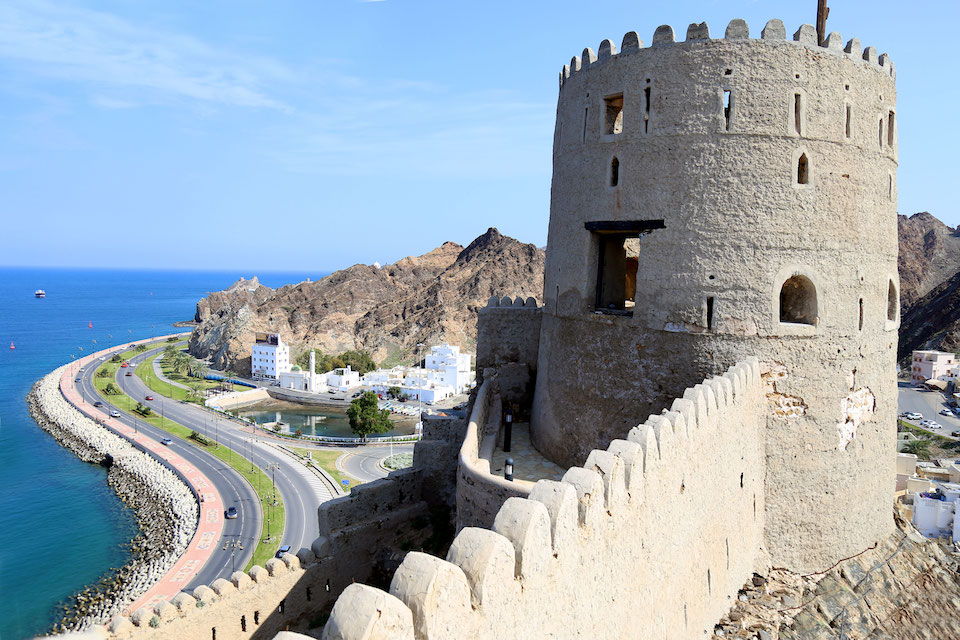
Muscat is like the rest of Oman, filled with small stone fortresses. They were mostly built by the Portuguese in the 16th century. However, the biggest one is Mutrah Fort. Although it is often closed to visitors, you can still climb it and enjoy the beautiful scenery on the port of Muscat.
Al Nakhal Fort (# oman blog)

Al Nakhal Fort is a large fortress in the Al Batinah region of Oman. This fort is located in Nakhal, a palm oasis about 120km from Muscat and is one of the most famous forts to visit. The exact date on which this ancient fortress was built is unknown, but many believe it was built during the pre-Islamic period, more than 1500 years ago.
Zighy Bay
Zighy Bay belongs to the small land of Musandam, bringing charming beauty, coming here at night you will be admiring the giant fireflies, twinkling in the dark, created from torches placed along the coast. Zighy Bay has 80 modern village apartments, with private swimming pools, providing visitors with wonderful moments of relaxation with the wind, sea and white sand.

Located in a rather remote area, Zighy brings unspoiled beauty but still wonderful charm. The bay is famous for its clear, blue water lying peacefully and quietly before the majesty and magnificent of the mountains in the distance. Thanks to its outstanding beauty, Zighy Bay has caught the eye of the world famous resort group The Six Senses (Agoda, Booking). There are more than 80 modern village apartments with private swimming pools built to provide visitors with the most relaxing moments.

Jebel Akhdar (Green Mountains)

And of course it’s not a waste to spend your precious time here. If you love outdoor picnics, trekking in the wild, exploring the wild nature… don’t hesitate to choose Oman as your destination. Because when standing on the top of Jebel Akhdar, about 3,048m high in the Al Hajar range, a few hours by car from the capital Muscat… you will not regret this wonderful choice.
